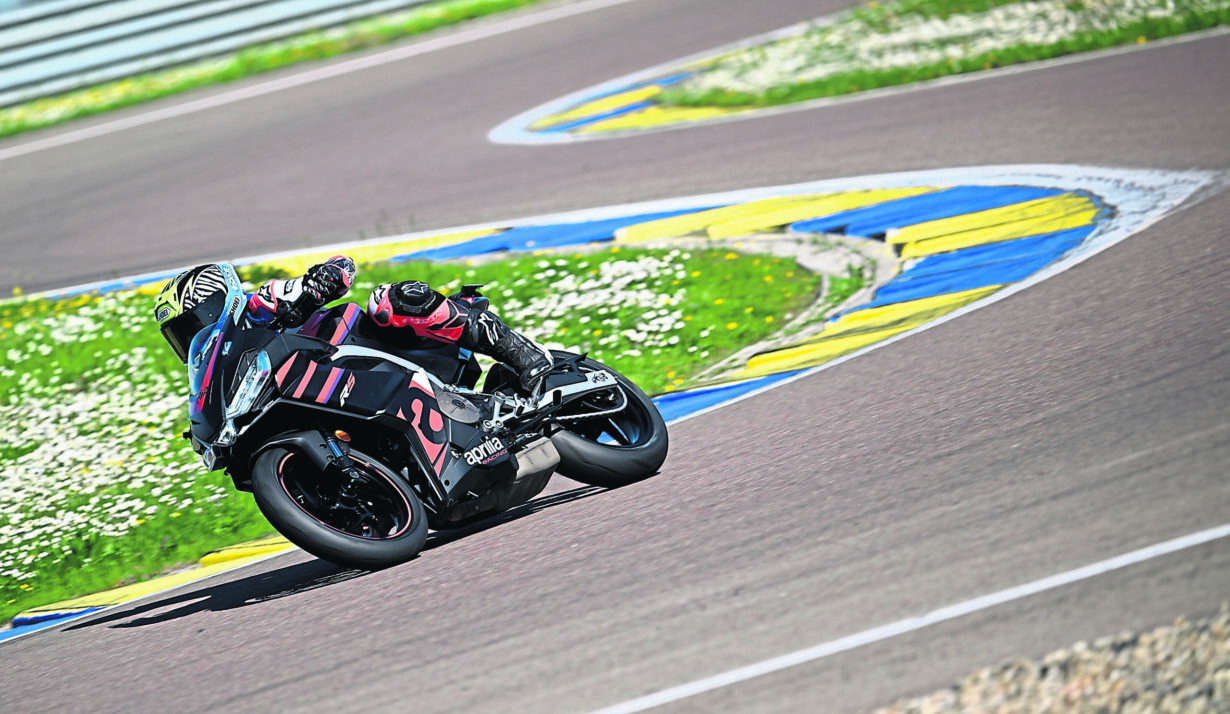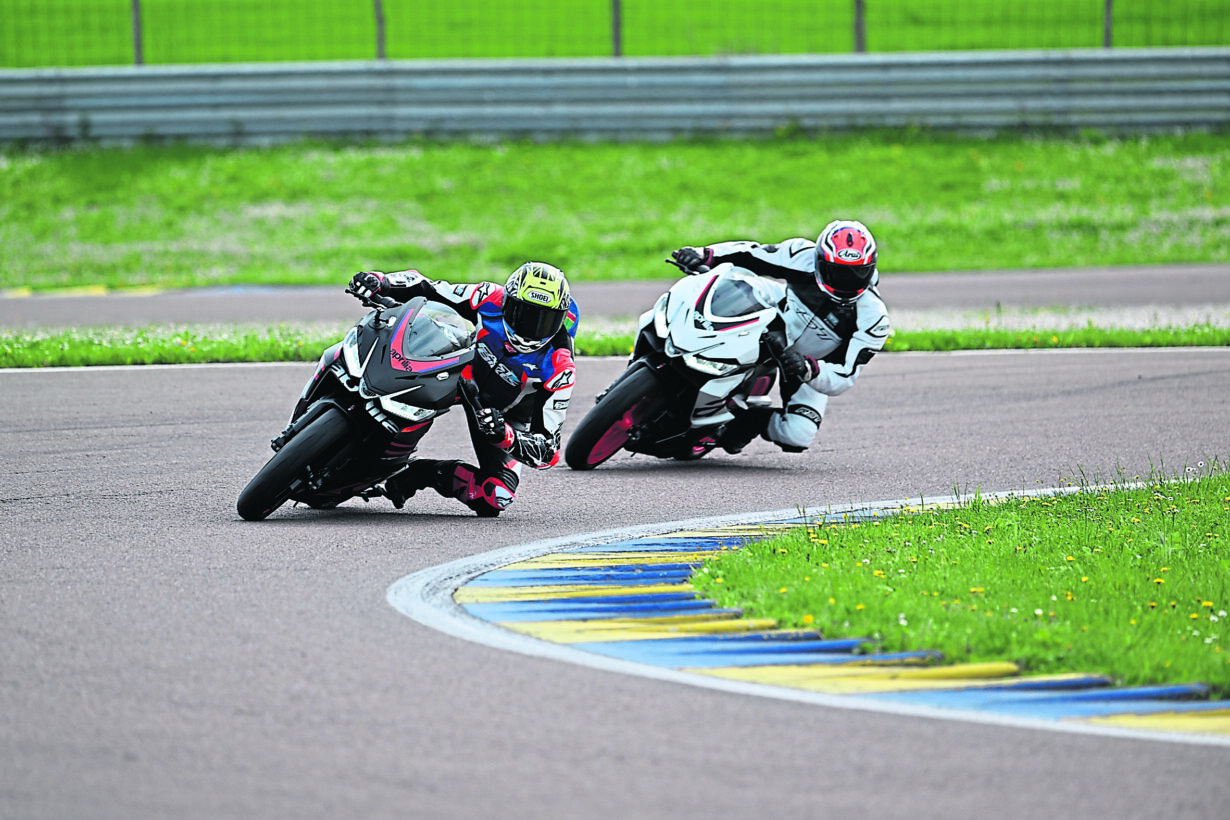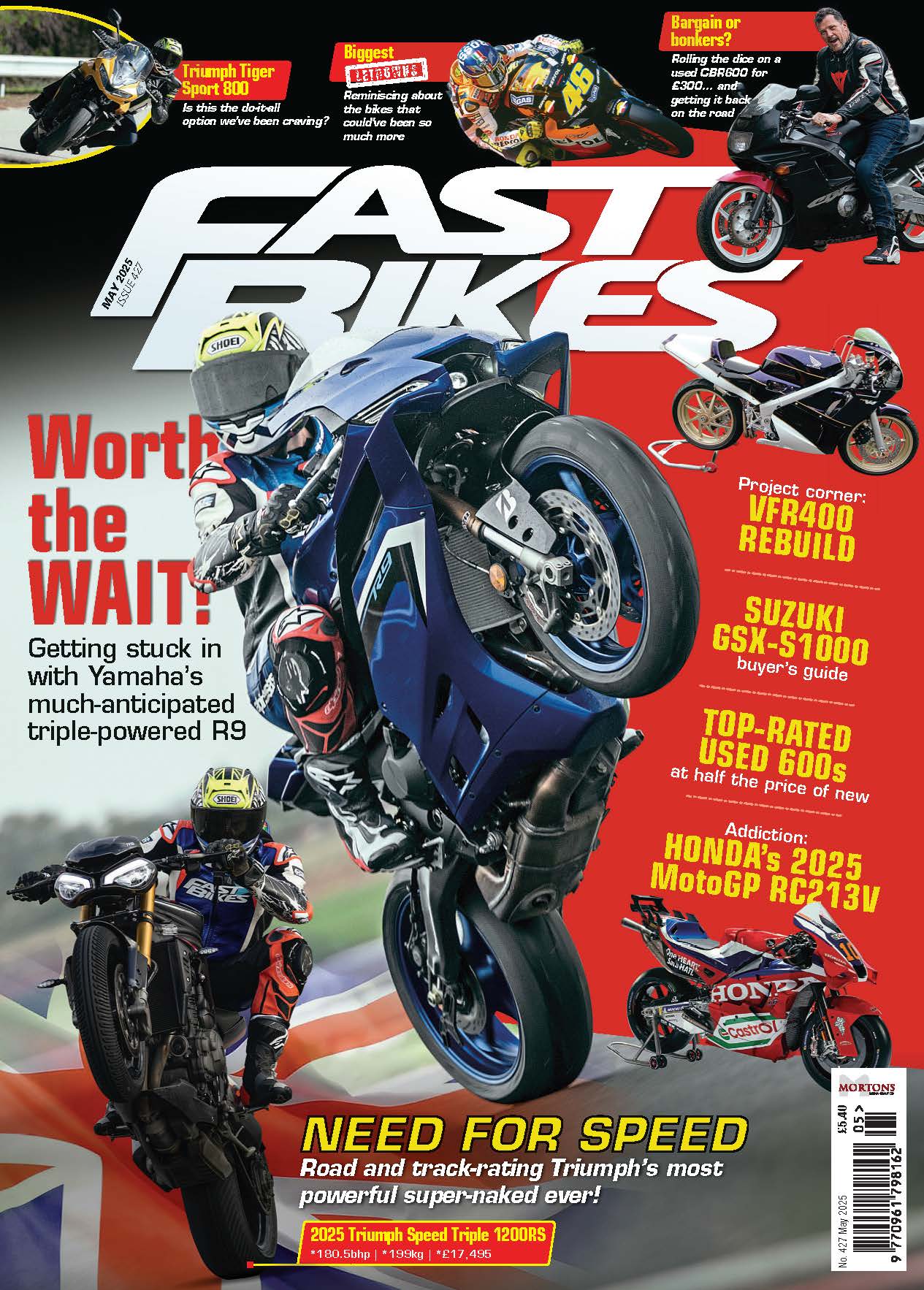Bruce Wilson gets to grips with the A2 friendly Assassin…
Fixated on goals and the chance to lift the bar in the hotly-contested A2 sportsbike market, there were two sets of numbers that mattered above all else for the firm from Noale: 175 and 47. To elaborate, the lightest an A2 machine can weigh is 175 kilos, which is exactly what the Aprilia hits the scales at. And the 47… well, that refers to the peak amount of bhp a bike of this class can produce at the aforementioned weight. In other words, the RS 457 could not be any lighter, or any more powerful, but there’s much more to this motorcycle than those two factors alone.

Slotting in tidily between the learner legal RS 125 and the middleweight maestro RS 660, this A2 assassin is Aprilia’s sure-footed way of keeping the custom in the family, delivering to the masses a model that’s dripping in tech, GP-styling and a level of performance that’s possibly best described as class-leading. It has the only aluminium frame amongst its field of rivals, plus double skin bodywork to aid cooling and aerodynamics in a bid to make the RS as slippery as possible.
The bike’s fully ride-by-wire, which means the factory’s been able to kit the RS out with a comprehensive suite of tech, including switchable ABS, three levels of riding mode and multiple levels of traction control that can be cranked up or down by paddles on the left switchgear. At the heart of the bike is an easy-on-the-eye, 5-inch TFT dash, that nestles nicely amongst the sizeable bodywork that looks and feels more substantial than what you’d expect on a machine of this size.
It’s the real deal, with a sizeable feel about it, despite its relatively low seat height that ensured me and my 5’ 9” frame had no issues planting both feet on the sun-blessed pitlane in readiness for some track action. On the one hand, Aprilia were super-keen to press the sporting potential of this machine, but they were equally eager to iterate that it was a bike for the masses, being as capable on the street as it would be on the track, and to ensure it packed the necessary versatility, raised clip-ons and relaxed pegs completed the accommodating ergonomic triangle.
As with most twins that feature a 270° crank, it sounded relatively meaty even on tick-over, reverberating from the neatly-underslung silencer. Add a few revs into the equation and the noise only got better, booming like an angry dog in sight of a postman. I’d expected the motor to feel more painful than the pulling of my own teeth, but the torquey bottom end soon got us up to a decent pace and after a lap in the saddle, I got my head around the nature of the twin, that demanded you throw gears at it to capitalise on its strong mid-range rather than rev it to the limiter for the sake of it. The engine felt effortlessly accessible and regardless of what lean angle I was at, I didn’t need to be holding back with big handfuls of throttle. The rear tyre just stuck nicely to the Tarmac, nullifying the kind of concern you’d get from something of a bigger, more potent disposition.

One thing that I did pick up quite early on was how restrictive the traction control could be, even in its least intrusive of settings, so after that initial session was in the bag, I pied the tech off completely. Personally, I think it’s great that bikes like this, aimed at riders stepping up in capacity, have tools like that to hand – but from pure performance perspective, it was inhibiting, so it had to go. Likewise, I’d made sure for my second outing that the ABS was weaned off to its least intrusive of settings.
We’re so used to seeing twin discs on bikes these days that the vision of a single rotor got me questioning the Aprilia’s stopping abilities on first sight, but it was a wasted wonder as not only was the initial bite impressively strong, but also the purchase from the ByBre caliper was consistent. The bike’s rear wheel would lock a little and unsettle the bike if you were too keen to hammer through the necessary three downshifts, locking the rear slightly despite a solid amount of support from the clutch. Smoother was definitely better on this pocket rocket.
The thing that shocked me most was how supportive the suspension was, at all angles. If you were kind to it, it was kind to you, which was especially important because it was only adjustable for preload at either end. On that note, I did ask the technicians to increase the preload at the rear as far as it would go, pointing the bike more on its nose, and that turned out to be a solid investment.
The £6500 Aprilia turned out to be so much more impressive than I imagined it could or should have been, but what else would you expect from a manufacturer that blends passion and performance at its heart? It might be some 200bhp down on the RS-GP24s we see on television, but make no mistake that the focus and desire to win lie just as engrained in this little ripper as it does in its prototype brethren.




